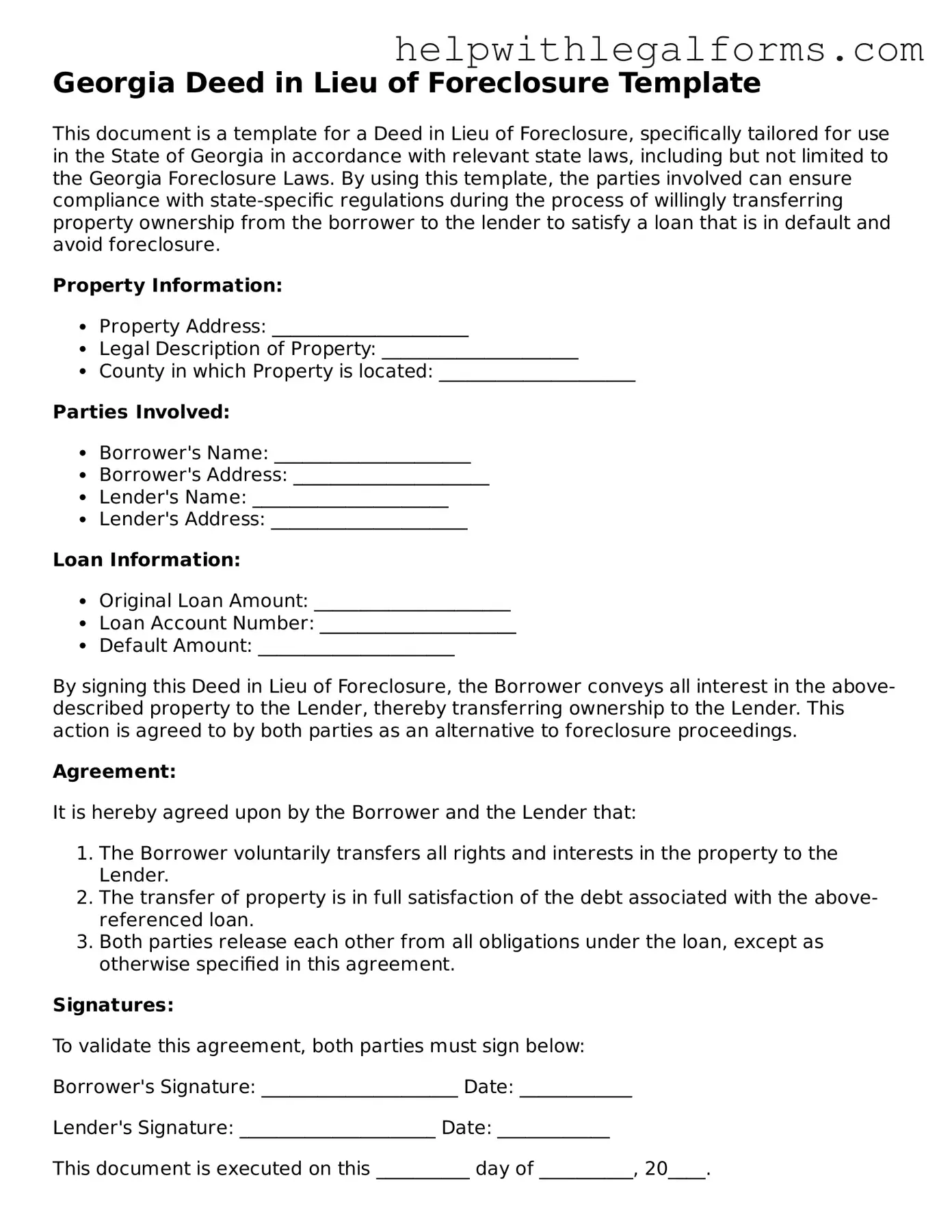What is a Deed in Lieu of Foreclosure in Georgia?
A Deed in Lieu of Foreclosure is a legal document in Georgia where a borrower voluntarily transfers ownership of their property to the lender to avoid foreclosure. This process allows the homeowner to be released from their mortgage obligations under certain conditions.
Who can use a Deed in Lieu of Foreclosure in Georgia?
This option is available to borrowers who are unable to meet their mortgage payments and wish to avoid foreclosure. Both the lender and the borrower must agree to the deed in lieu of foreclosure for it to be valid.
What are the benefits of a Deed in Lieu of Foreclosure?
For homeowners, it can reduce the emotional and financial distress associated with foreclosure. For lenders, it offers a more straightforward and less costly alternative to the foreclosure process. Both parties might benefit from a faster resolution.
Are there any drawbacks to a Deed in Lieu of Foreclosure?
Yes, there can be drawbacks. Homeowners may lose their property without any return on their investment. It may also impact their credit score, though typically less than a foreclosure would. Additionally, there could be tax implications for the forgiven debt.
How is the process of a Deed in Lieu of Foreclosure initiated in Georgia?
The process usually starts with the borrower reaching out to the lender to express their interest in a deed in lieu of foreclosure. Both parties will then negotiate the terms, which may include vacating the property and resolving any junior liens.
What are the legal requirements for a Deed in Lieu of Foreclosure in Georgia?
The deed must be in writing and include a legal description of the property. It must be voluntarily signed by both parties and notarized. Additionally, it should be recorded in the county where the property is located to be effective.
Can a lender refuse a Deed in Lieu of Foreclosure?
Yes, a lender can refuse to accept a deed in lieu of foreclosure. The decision may depend on the lender’s policies, the specific circumstances of the borrower, or if there are junior liens on the property that complicate the transaction.
How does a Deed in Lieu of Foreclosure affect a borrower’s credit score?
While it is generally less damaging than a foreclosure, a deed in lieu of foreclosure can still negatively impact a borrower's credit score. The exact impact varies depending on the borrower's overall credit history.
Can you rescind a Deed in Lieu of Foreclosure in Georgia?
Once a deed in lieu of foreclosure is completed and recorded, it is difficult to rescind. Both parties would have to agree to undo the transaction, which is unlikely. Legal advice is recommended for anyone considering this option.
